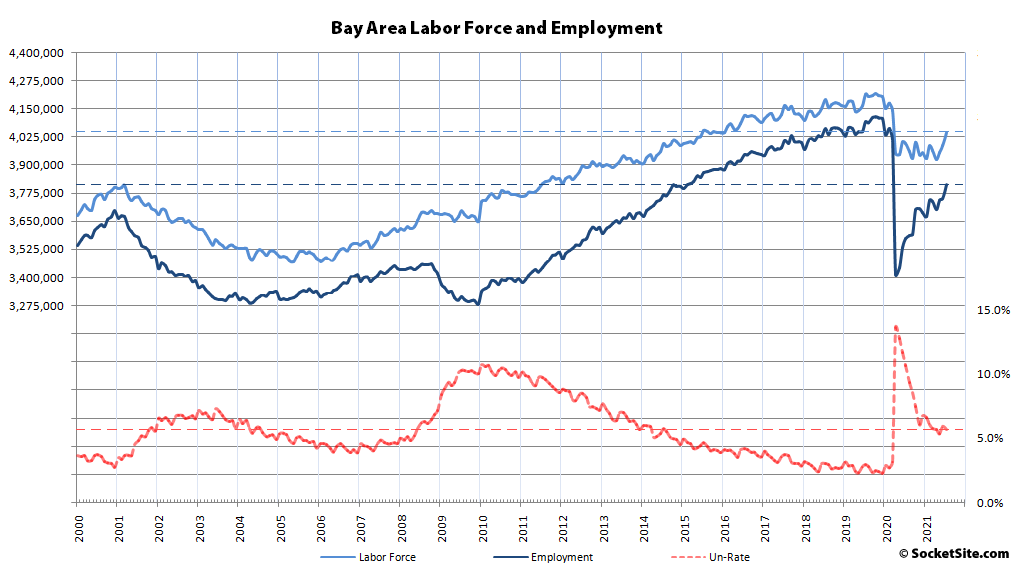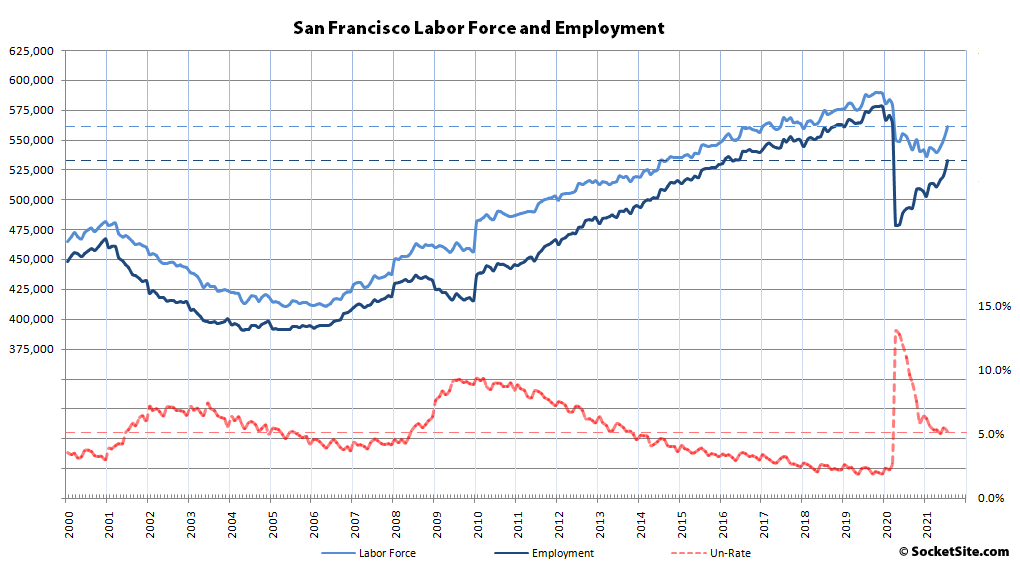Having increased by a downwardly revised 3,500 in June, the number of people living in San Francisco with a paycheck jumped by 12,200 in July to 532,400, representing the most employed residents in San Francisco since the pandemic hit and over 40,000 more employed residents in the city than there were at the same time last year.
That being said, there are still nearly 39,000 fewer employed people in San Francisco than there were prior to the pandemic and the labor force is down by over 22,000, for an unemployment rate of 5.2 percent versus 1.9 percent at the end of 2019.
At the same time, the number of employed East Bay residents, which actually slipped in June, increased by 17,500 in July to 1,452,500, which is 85,000 more employed East Bay residents than there were at the same time last year but still 107,000 fewer employed people than prior to the pandemic with 53,000 fewer people in the labor force for an average unemployment rate of 6.7 percent.
Employment in both San Mateo and Santa Clara increased in July as well, by 9,800 and 15,400 respectively. And as such, there are now over 86,000 more people employed in the Valley (1,397,100) than there were at the same time last year but still 81,000 fewer than there were prior to the pandemic, with nearly 46,000 fewer people in the labor force (1,468,800) and an unemployment rate of 4.9 percent.
Total employment across Marin, Napa and Sonoma increased by 10,100 last month to 432,000 and was 31,800 higher than at the same time last year. But there are still over 22,000 fewer employed North Bay residents than there were prior to the pandemic with 10,300 fewer people in the combined labor force (456,100) for average unemployment rate of 5.3 percent.
And as such, a total of 402,800 jobs have been recovered across the Bay Area since the pandemic hit, with 3,814,000 Bay Area residents now employed, but there are still 248,100 fewer employed residents than there were prior to the pandemic and the labor force is down by 131,400, for an unemployment rate of 5.7 percent versus 2.3 percent at the end of 2019.

